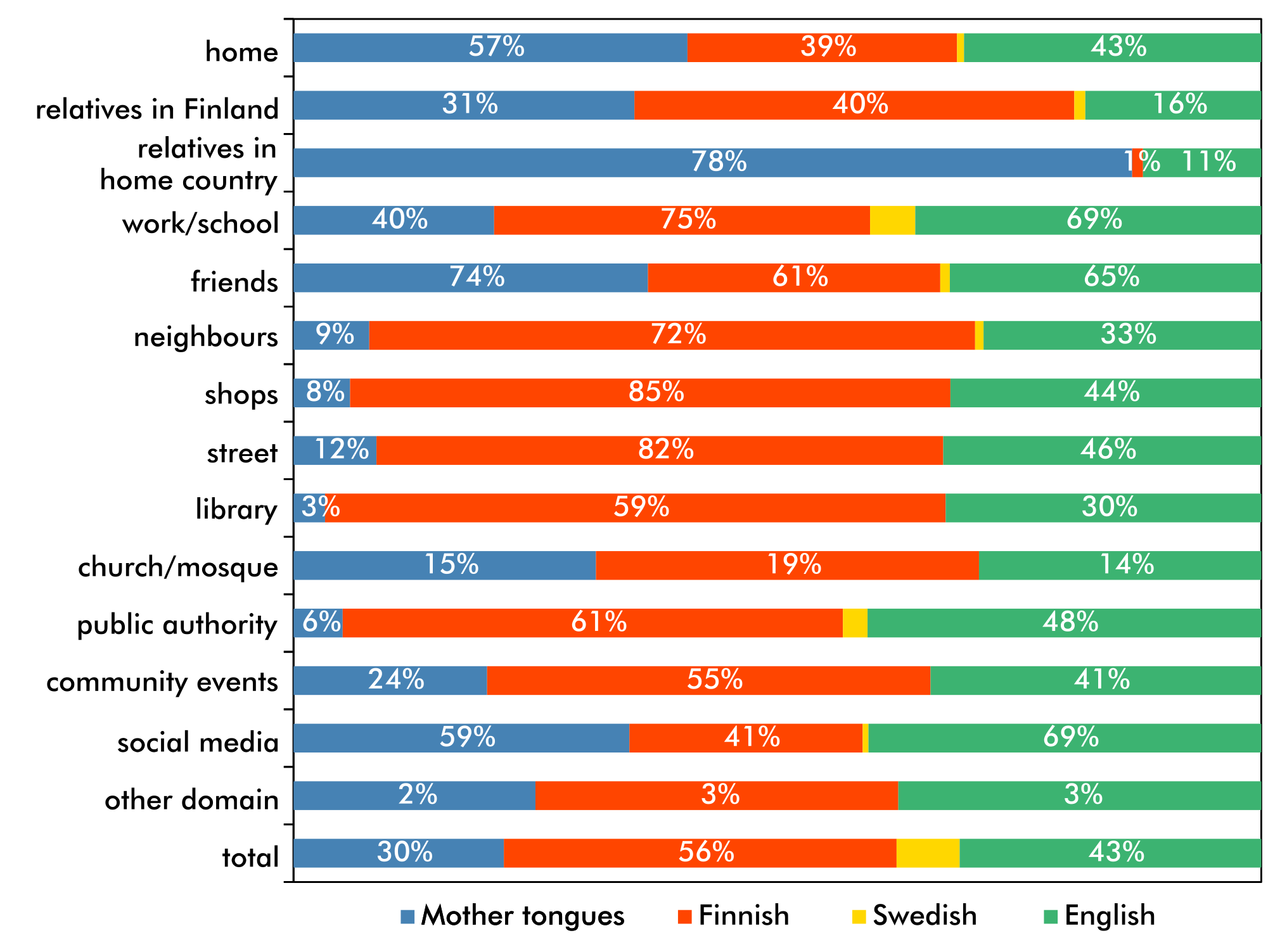Finnish and English are the major languages used by the consultants Consultants, on average, evaluate their English skills to be higher than their Finnish ones Swedish does not seem to appeal to speakers of foreign languages and only few are willing to learn it
In addition to their mother tongues, informants often spoken other languages as well. In this section, results for consultants’ skills about the majority languages of Finland are discussed. We took Finnish and Swedish, which are the national languages of Finland, and English, the global lingua franca, to represent the majority languages of Finland. This page consists of two sections, first section is related to language skills and language learning and the second section compares use of Finnish, English and Swedish with consultants’ mother tongues.
Language skills
Finnish
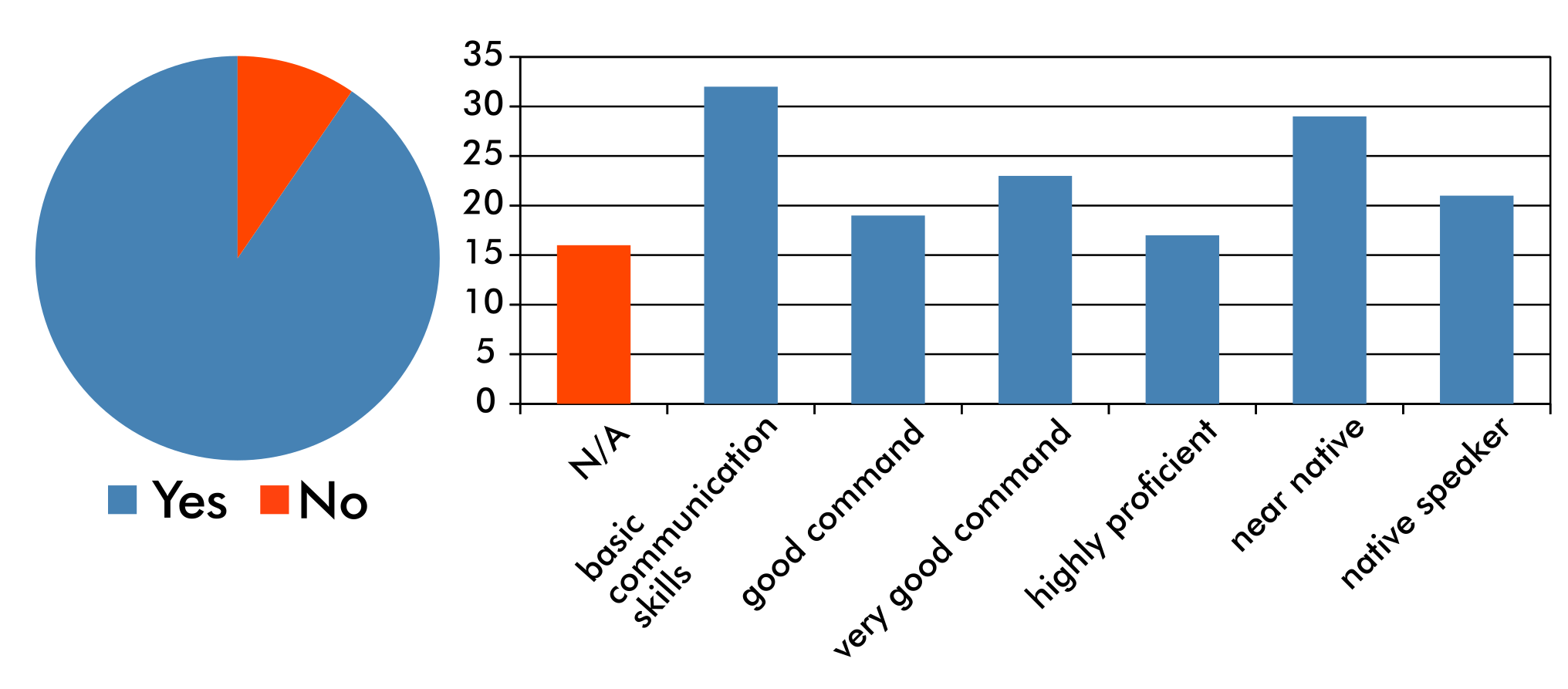
As mentioned in part ‘Consultants’, 34 consultants had gone through the Finnish school system at least in part. 30 consultants had marked Finnish to be their mother tongue. This explains the amount of native speakers in the study. Nevertheless, even though some consultants had lived most of their lives in Finland, they only considered their Finnish level to be ‘near native’ or ‘highly proficient’ and might have not marked it as their ‘mother tongue’.
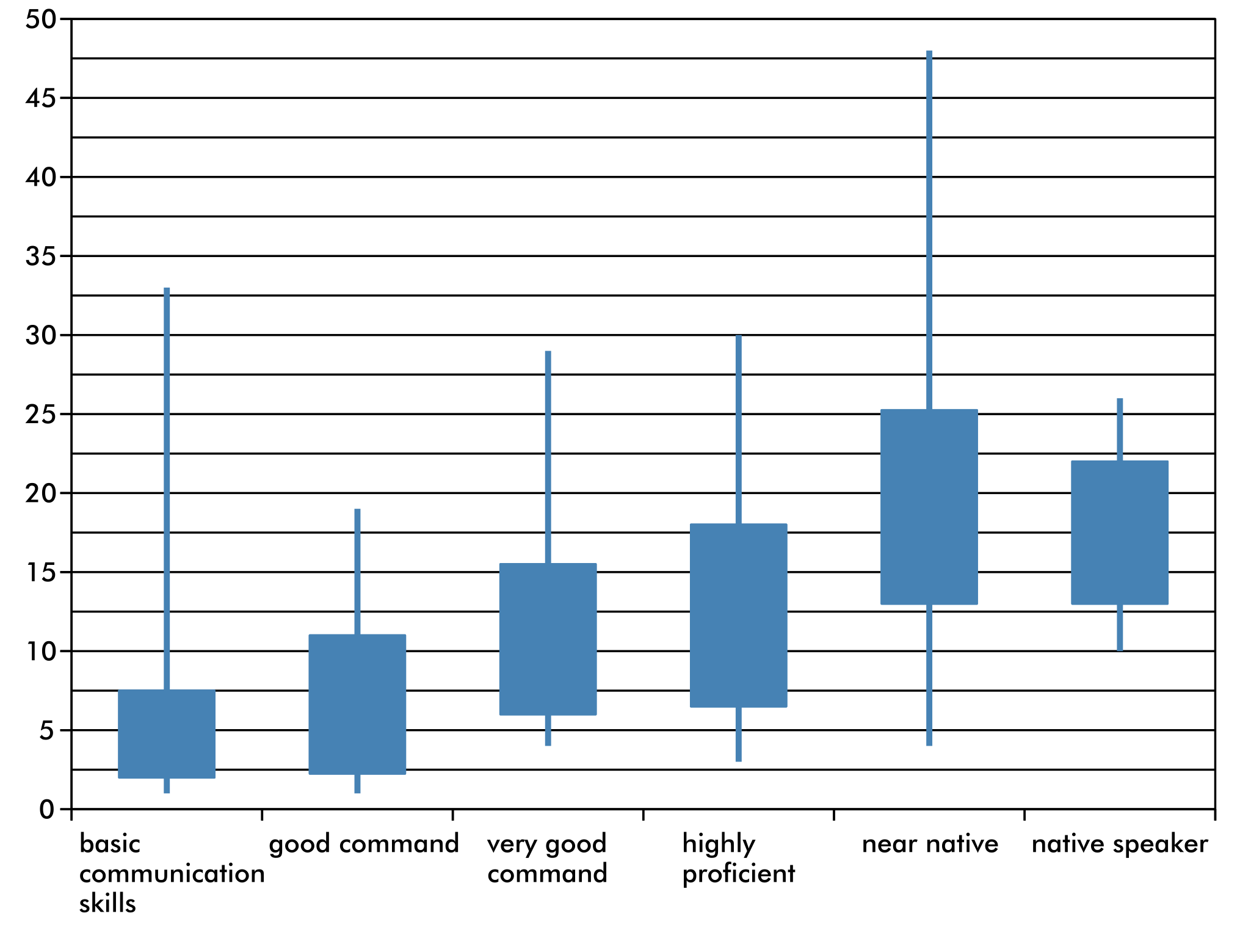
Looking at the above candle graph, we can see that there is a correlation between the amount of time during which the consultant lived in Finland and the consultant’s Finnish language skills. There is great variance as well, especially in near native category which is most likely because of the older consultants who had lived in Finland for decades, but only learned Finnish as a second language. The native speaker category has less variance because it most often included second generation immigrants who were among the youngest age group (18-29 year olds). It is good to note that all of the first five skill categories had consultants who had lived in Finland for less than five years, which is a good reminder to note that these are self-reported skill levels.
The graph also shows that time does not fully explain learning Finnish and it is possible to have lived 33 years in Finland without learning more than basic communication skills in Finnish. Most of the consultants who did not speak Finnish were interested in learning it (86%, 14 consultants). Some of the reasons why people felt they weren’t interested in learning Finnish included lack of time, no need and difficulty. One consultant who wished to improve their Finnish noted that they had difficulties, because Finnish people were too quick to switch languages to English, but other one noted that they had received plenty of support from the Finnish people. Consultants wanted to learn the language because it would ease their life in Finland, both at work and life in general. Finnish being a their partner’s language was also a common reason for wanting to learn it.
Finnish had been mostly learned in school. In addition to school people had attended different courses such as those organized by the Summer University or by community colleges. Many had also learned Finnish more informally at work and at home from Finnish spouses and children who are or were attending Finnish speaking schools. Often, it was mentioned that living in Finland was the way the language was learned, though some consultants had learned the language in school abroad or as a heritage language before coming to Finland.
Swedish
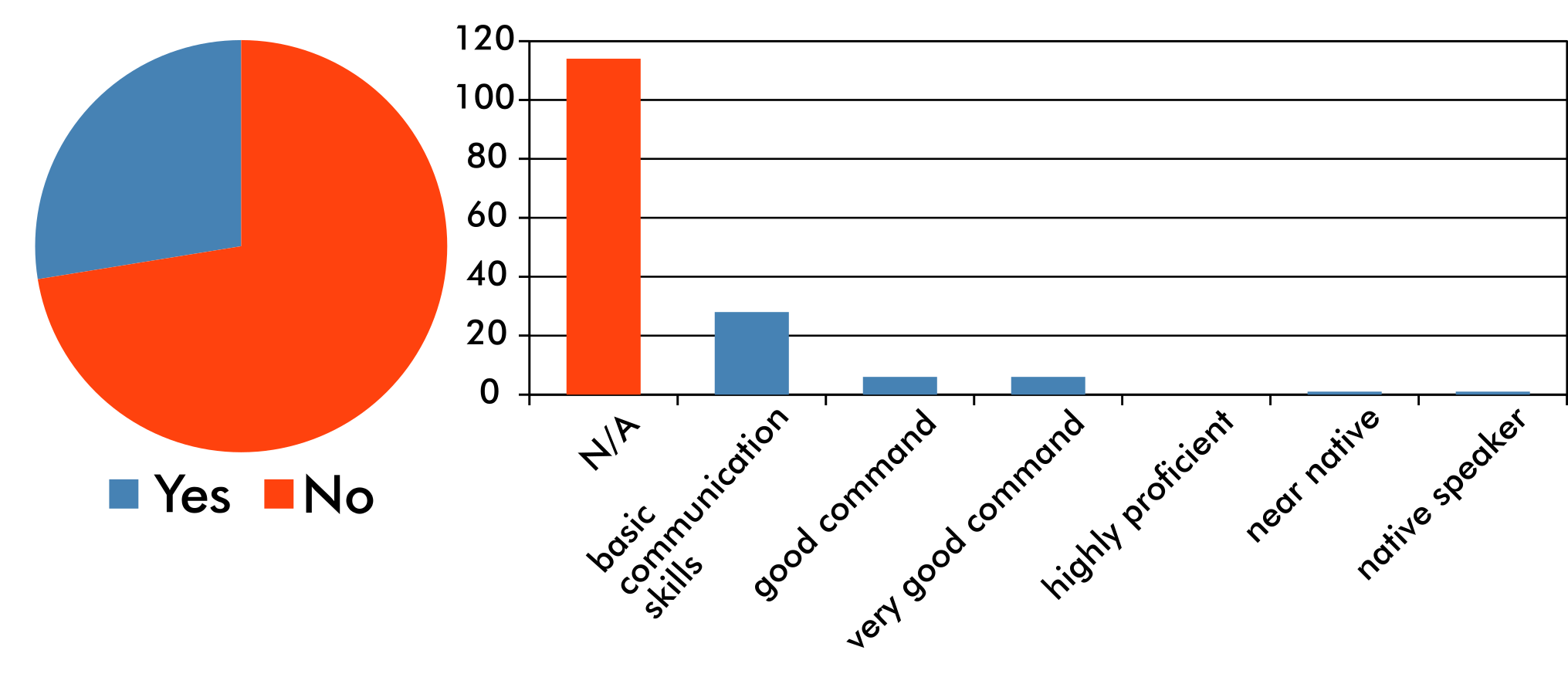
Consultants who reported to be able to speak Swedish (43) were divided between those who had born/grown up in Finland (25) and those who had not (18), thus the amount of Swedish speakers is not directly explainable by the Finnish school system. Outside of school, people had learned Swedish from courses, environment (e.g. signs, listening to people on street), through related languages, through media, friends and studying by themselves. Motivations to do so involved partners who spoke Swedish, living in Sweden (or another Scandinavian country) as well as general interest.
Majority of those who did not speak Swedish also did not wish to study it (67%). People had often clear reasons why they were planning not to learn the language and the reasons included: prioritization of Finnish, lack of time, no need for the language, no interest and even considering Swedish aesthetically unpleasing or just generally disliking it. Couple of the consultants who were interested in learning the language noted that it might open up new job possibilities or that it might be required by work. It was also seen as an easier alternative to Finnish by one of the consultants.
English
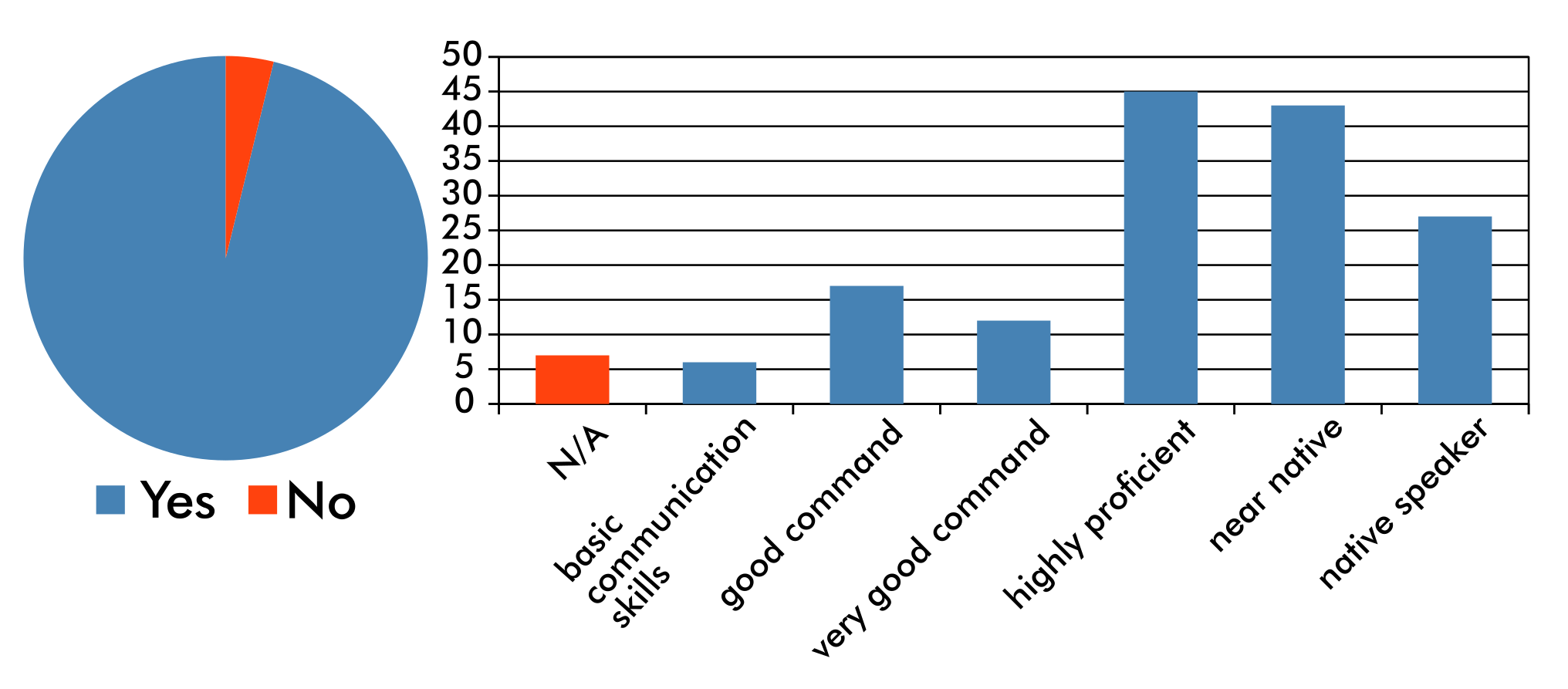
It is not surprising that more consultants reported to be able to speak English than Finnish, after all, English is taught in Finnish schools as well. What is bit surprising how differently people have evaluated their English skills compared to Finnish skill; it is clear that people see their English skills to be much higher than their Finnish skills. Like with Finnish, people had marked English to be their mother tongue, but actually evaluated their skill to be ‘near native’ level. This is evident in cases for people who consider English to be their ‘strongest’ language, which they are most proficient in using in international settings after living in multiple countries.
Five out of the six consultants who did not speak English wanted to learn it. The one consultant who did not want to study English, said that they had no interest towards the language and preferred to first study Swedish.
English was also mostly learned in school, but other common ways people had learned were through media and self-study.
Language use differences
As an extension to the discussion about mother tongue use, it is good to compare the differences between the use of mother tongue(s) and Finnish, Swedish and English. Please note that the chart stretch the results thus it appears that other domain and relatives in home country would have had the same amount of answers even though this is not true. Below, the two graphs show results for two groups: all consultants and consultants who did not speak Finnish, Swedish nor English as their mother tongues.
All consultants
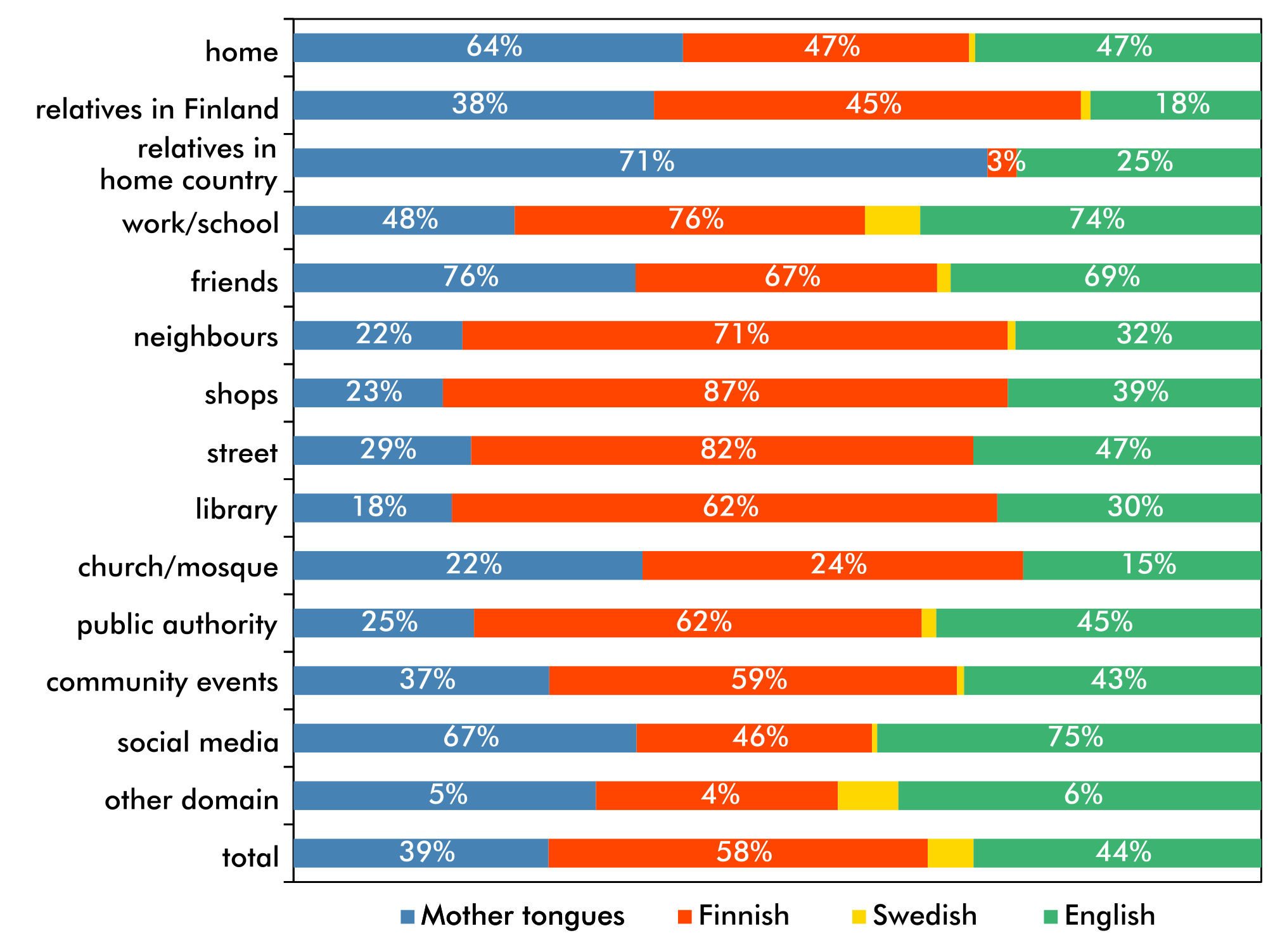
No Finnish, Swedish or English speakers
